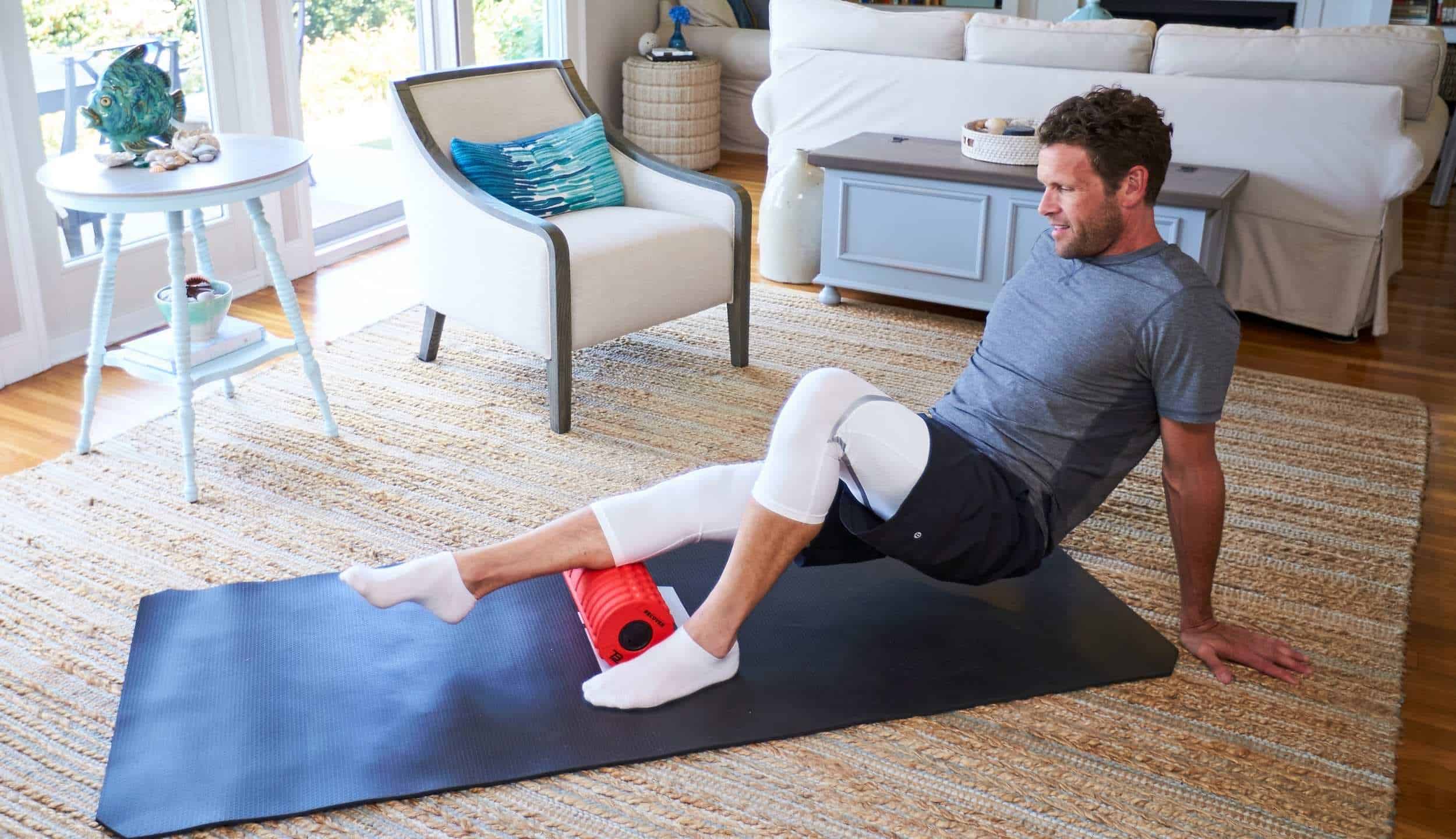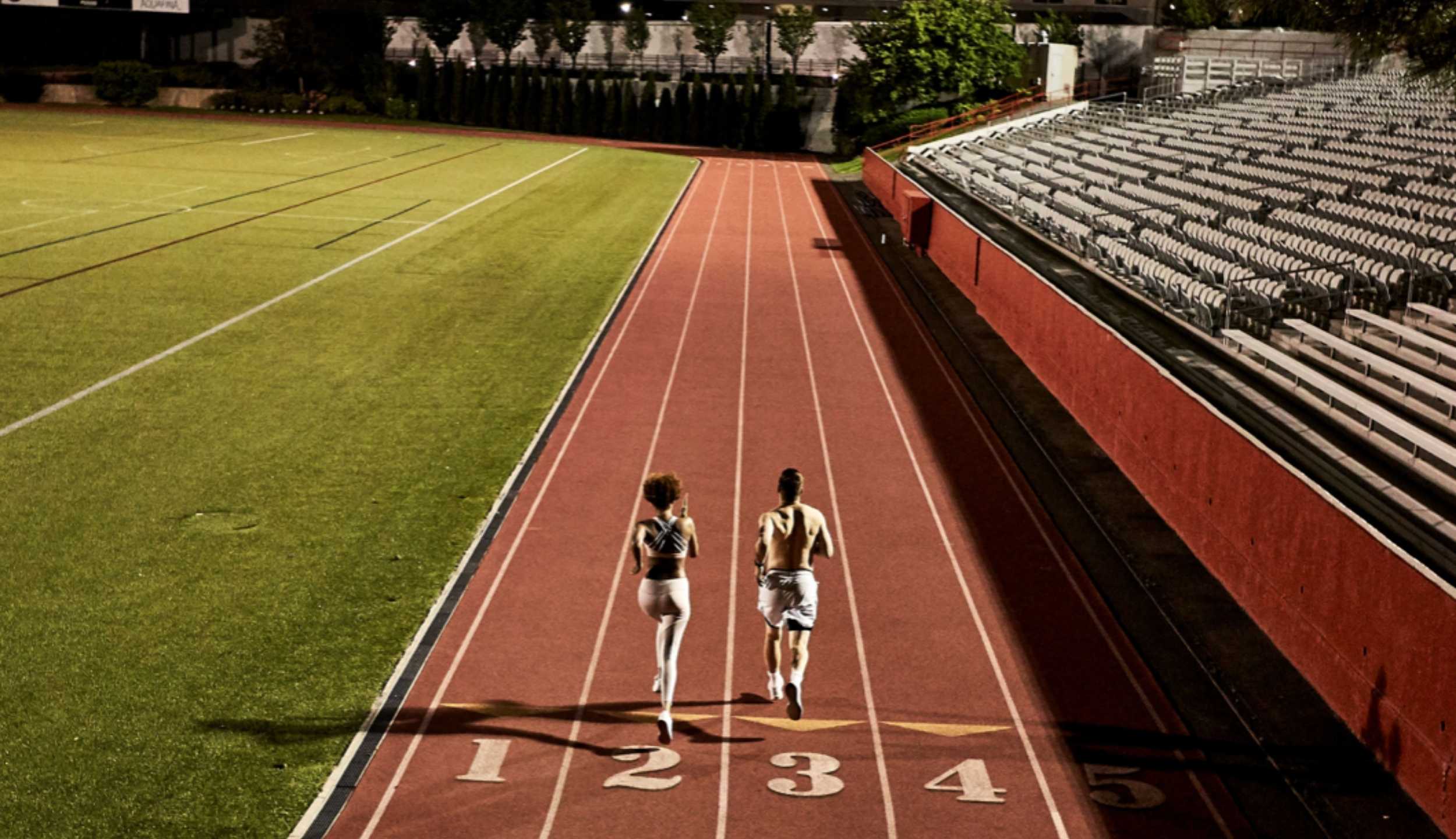
To obtain maximum performance in your sport, you need to match hard work with a diligent recovery and restoration program. The recovery habits of professional athletes enjoying long careers can and should be used by those juggling the stresses of work, life, and sport. For those who have gone overboard for too long — training hard, resting little and without a good recovery practice — the price can be overtraining syndrome and he or she will be in need of a good overtraining remedy to restore health and the opportunity to perform well. In this article, we examine the signs and symptoms of overtraining and offer ideas on how to get back on track.
The path to the top is the path of work. The hype about hacking one’s way to a great performance has been waning for good reason: It’s akin to building a house out of straw rather than bricks. It was (and is) consistent, disciplined, hard work (that started with 6 a.m drill workouts as a teenager) that Tom Brady used over time to go from a back-up quarterback on a losing high school freshman team to seven-time Super Bowl champion. Whether a three-hour aerobic training run to prepare for a marathoner a four-minute HIIT metabolic conditioning workout designed to push anaerobic capacities, hard work is the path to top fitness and performance.
But as Dan John, former All-American discus thrower, coach and author of Intervention has explained, the harder the workout, the more seriously you need to dedicate yourself to restoration and recovery. One without the other will undercut the best efforts and set you back rather than propel you further. If there’s a secret harbored by top professional athletes who enjoy long careers it’s that they pay serious attention to detail when it comes to recovery. Before, during and after training and competition they are seeking to get an edge by using the best recovery methods and techniques they can get their hands on. Because of this brand of dedication to rest, recovery and restoration, they will never be in need of an overtraining remedy. For those who have the mental tenacity to train and compete extremely hard but lack the discipline to counterbalance their efforts with an equal dose of recovery may enjoy a spike in improvement — but not a sustainable one.
What typically follows: aches, pains, injuries, fatigue and a drop in performance. This kind of athlete can read the signals in an upside-down fashion. They assume that the problems are related to not working hard enough. All too often they ratchet up the workload and fall into the abyss of overtraining. In what may be surprising, the risk of overtraining syndrome can be higher for the weekend warrior or age-group athlete. For professional athletes, sleep can be a priority of the job.
Tom Brady routinely sleeps from 9 p.m. to 6 a.m. And consider that other sports stars like Lebron James and Roger Federer have been reported to get 12 hours of sleep a night. Compare this to the bustling age-group Ironman triathlete with a family and a 50-hours-per-week job — who may be lucky to get seven and may be guilty of cutting back on sleep to in order to make jam more workouts into a day. Stress is stress. For the athlete holding down a career or managing a family — or both — the stress of training is added on top of overall life stress. The importance of balancing training with recovery is crucial to performance, fitness and health.
Has this happened to you? Have you been charging hard and often without matching your efforts with equal magnitude in recovery? Then getting on the right path might require a system reset. If this is you, let’s talk about the overtraining signs, symptoms and a good overtraining remedy to help get you back on track.

Overtraining means doing too much and recovering too little — and there are several ways to do it
According to a paper published in the Journal of Strength and Conditioning Research, overtraining can be broken down into multiple categories. At the highest level, there are two main types of overtraining: monotonous program (also known as doing too much of one thing) and overwork (also known as doing too much — period).
Both types of overtraining lead to a plateau or loss of performance. Overwork can happen in two major ways:
Acute Overwork
Overwork or overreach, where you do way too much in a few consecutive training sessions. Imagine lining up for a marathon where you crammed all of your training into a couple of weeks rather than a number of months. That’s a recipe for both overwork and overreach.
Chronic Overwork
Chronic overwork is where you do a little too much every day for a long period of time without equal recovery. If you find yourself here, you’ll need to commit to an overtraining remedy to dig yourself out of the hole. These forms of overtraining result in either short-term or long-term decreases in performance.
In the short-term, overtraining can lead to non-functional overreaching (NFOR) — a drop in performance lasting a few days to a week and caused by doing too much and recovering too little. If NFOR gets worse, it can develop into overtraining syndrome (OTS), in which the drop in performance lasts for months or years despite adequate rest.
Who trains too much?
Overtraining is common, but it’s more common in athletes who compete. Three in five elite runners and 33 percent of amateur runners will experience some mix of overtraining symptoms in their careers. About three in ten adolescent elite athletes report some form of NFOR during their careers. In terms of risk, the risk of overtraining is higher for individual sports like running and sports that don’t have a high physical demand— like golf.

How do you know if you need an overtraining remedy?
Overtraining is called overtraining because it has noticeable negative consequences. Fortunately, if you keep a careful watch on your feelings, you’ll be the first to know if something’s wrong.
Overtraining is marked by the eight lows:
1. LOW ATHLETIC PERFORMANCE
2. LOW MOTIVATION
3. LOW ENERGY
4. LOW FOCUS
5. LOW MOOD
6. LOW WEIGHT
7. LOW SELF-CONFIDENCE
8. LOW TESTOSTERONE
Symptoms of overtraining can be physical or psychological.
Psychological symptoms include decreased motivation, loss of self-confidence, irritability, depression, lethargy, excessive or unexpected fatigue, and even an inability to concentrate. Sleep patterns also tend to suffer as a result of overtraining, and insomnia could result.
Physical symptoms of overtraining include weight loss, decreased VO2-max, increased resting heart rate, decreases in testosterone, and loss of lean body mass.
If you’re experiencing any of these symptoms, the first step toward an overtraining remedy is to look at what you’re asking your body to do. A high training volume coupled with unexpected fatigue, moodiness, or any of the above symptoms is a strong signal that it’s time to prioritize and upgrade your recovery program.
When you’re logging your exercise, track your perceptions as well as your facts
To avoid overtraining, you need a way to quantify your activity — that is, turn your exercise into numbers. However, simply logging your reps and miles doesn’t give you the full picture of how hard you worked. You also need to write down how your physical and psychological perceptions.
The simplest way to rate the perceived exertion of each workout is on a scale of one to 10. Consider metrics like the difficulty of the workout, how many rest periods you were forced to take, overall fatigue at the end of the workout, quality of sleep the night after the workout and how fatigue level when you wake up.
Logging your effort might be simple, but knowing what to do with the information is more complicated. In a sense, half the battle of maintaining a sustainable training volume is being aware of your workload. But a key uncertainty remains: how much is too much? When should you rest? And when should you push harder?

Prevent overtraining with proper recovery
In training, preventing OTS, illness, and injury is intrinsic to your chase for great performance. If you are lax in your recovery program, you are being lax with your conditioning. To prevent overtraining and loss of health and performance capacity, treat recovery as a critical phase of your workout. Plan it out with the same level of detail — your sleep, your pliability work, your protein, your hydration, and your rest days. To that end, here are five helpful tips:
1. Follow exercise with consistent pliability work
Roll your muscles before and after your workout with a TB12 Vibrating Pliability Roller or Sphere. Working the soft tissues of your legs with a roller increases blood flow and oxygenation, which allow your muscles to work more efficiently throughout your actual training. This means less lactic acid buildup and less tissue damage — an acceleration to total recovery.
2. Hydrate with electrolytes
Your body loses water and electrolytes over time, especially when you exercise. To avoid uncomfortable and dangerous dips in electrolyte levels, add an electrolyte solution to your water bottle — and target drinking half your bodyweight in ounces every day.
3. Don’t Miss the Protein Window
Find a protein supplement that’s good for you and that tastes great. Using a protein supplement is a tried-and-true way to accelerate your recovery after a workout. Finding a variety that you enjoy is a great way to make protein a habit.
4. Hardwire rest days into your training plan
Rest days might not be as fun as training days, but they’re just as important. Plan for 3-4 rest days every two weeks.
5. Safeguard your sleep by protecting your circadian rhythm
Your circadian rhythm controls your sleep-wake cycle, your hunger, and your hormones, and it’s very sensitive. Keep your circadian rhythm on track by waking up at the same time every morning (including weekends) and avoiding blue light in the evening.
Match your recovery volume to your training volume
The best overtraining remedy is prevention. You know how hard you work — but how hard do you recover? Even with the best intentions, it’s easy to let the balance lean in the favor of overtraining. By paying careful attention to your training volume, your perceived level of exertion, and your recovery practices, you can ensure that today’s activity doesn’t hurt tomorrow’s.







